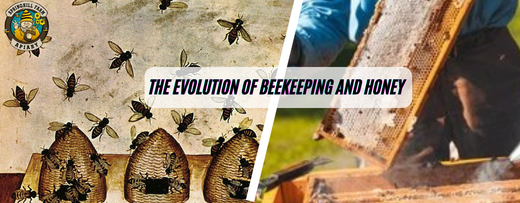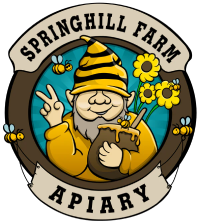The Evolution of Beekeeping and Honey
•Posted on January 08 2025

Beekeeping, also known as apiculture, is an ancient practice that has evolved significantly over time. Technological advancements, changing societal values, and a growing understanding of environmental issues have all influenced this evolution. The history of beekeeping, from its origins to contemporary practices, highlights its essential impact on agriculture, culinary traditions, and ecological sustainability.
Historical Beginnings
The practice of beekeeping dates back over 6,000 years, with evidence suggesting that ancient Egyptians were among the first to domesticate honeybees. Archaeological discoveries, including cave paintings in Spain, show that humans were harvesting honey from wild hives, indicating some of the earliest attempts to manage bee populations. In ancient Egypt, honey was highly valued as a sweetener and was often offered to gods, particularly Ra, the sun god. This sacred connection between bees and the divine underscored the cultural importance of honey in ancient civilizations.
As time progressed, beekeeping practices evolved. The Greeks made significant contributions to the study of bees and honey production. Philosophers such as Aristotle documented bee behaviour and their vital role in honey production. The economic value of honey and beeswax became increasingly recognized, leading to their use in trade, medicine, and religious rituals.
By the Middle Ages, beekeeping had spread throughout Europe, with monasteries playing a central role in its practice. Monks maintained hives to produce honey and beeswax, both essential for food and religious ceremonies. Beekeeping methods were rudimentary at this time, relying on hollow logs or straw skeps. While effective, these methods were labour-intensive and often risky, as beekeepers could lose entire colonies while extracting honey.
The Advent of Modern Techniques
The 19th century marked a turning point in the evolution of beekeeping. Lorenz Langstroth's invention of the movable-frame hive in 1851 revolutionized the field. This innovation allowed beekeepers to inspect and manage hives without damaging them, resulting in healthier colonies and more efficient honey extraction. Langstroth's design became the foundation of modern beekeeping, transforming it from an artisanal craft into a more scientific and systematic approach.
The introduction of new tools and techniques further advanced beekeeping. For example, the smoker, which when used properly calms bees during hive inspections, became an essential tool for beekeepers. By the late 19th and early 20th centuries, beekeeping had become more widespread, evolving from a professional pursuit into a popular hobby. As a result, honey production increased, and the demand for honey and bee products soared. Commercial beekeeping operations emerged, particularly in countries such as the United States, China, and Turkey, which became significant honey producers.
Transportation technology also played a crucial role in the growth of the honey industry. As global trade expanded, honey could be transported to distant markets, making it a household staple worldwide.
The Contemporary Perspective
In recent decades, there has been growing awareness of bees' crucial role in pollination and food production. With the decline in bee populations due to pesticide use, habitat loss, and climate change, beekeeping has gained renewed attention. Modern beekeepers are focused on honey production, preserving bee populations, and maintaining ecological health.
Urban beekeeping has become increasingly popular in cities worldwide. Many city dwellers now keep hives on rooftops or in their backyards, helping to educate the public about the importance of bees. Community workshops and educational programs have flourished, teaching people about bees' challenges and their essential role in food production.
In line with this shift in perspective, honey production has adapted to meet evolving consumer preferences. There is a noticeable trend toward raw, unfiltered honey, with consumers seeking pure, local sources. The rise of organic farming has prompted many beekeepers to adopt sustainable practices, ensuring that honey is produced responsibly and environmentally friendly. New honey varieties, including flavoured and therapeutic options, have also emerged, offering consumers unique culinary experiences.
Challenges and Future Trends
Despite its rich history, beekeeping faces several challenges today. One pressing issue is the varroa mite, a parasitic pest that attacks honeybees, weakening and killing colonies and threatening honey production. Beekeepers also contend with various diseases that affect bee populations. The beekeeping community has invested in research to develop mite-resistant bee strains and to promote pesticide-free farming practices.
Looking toward the future, technological advancements are expected to play a crucial role in the ongoing evolution of beekeeping. Innovations such as artificial intelligence-driven hive monitoring systems and the use of drones to track bee health are already being explored, promising to enhance the efficiency and sustainability of beekeeping practices.
